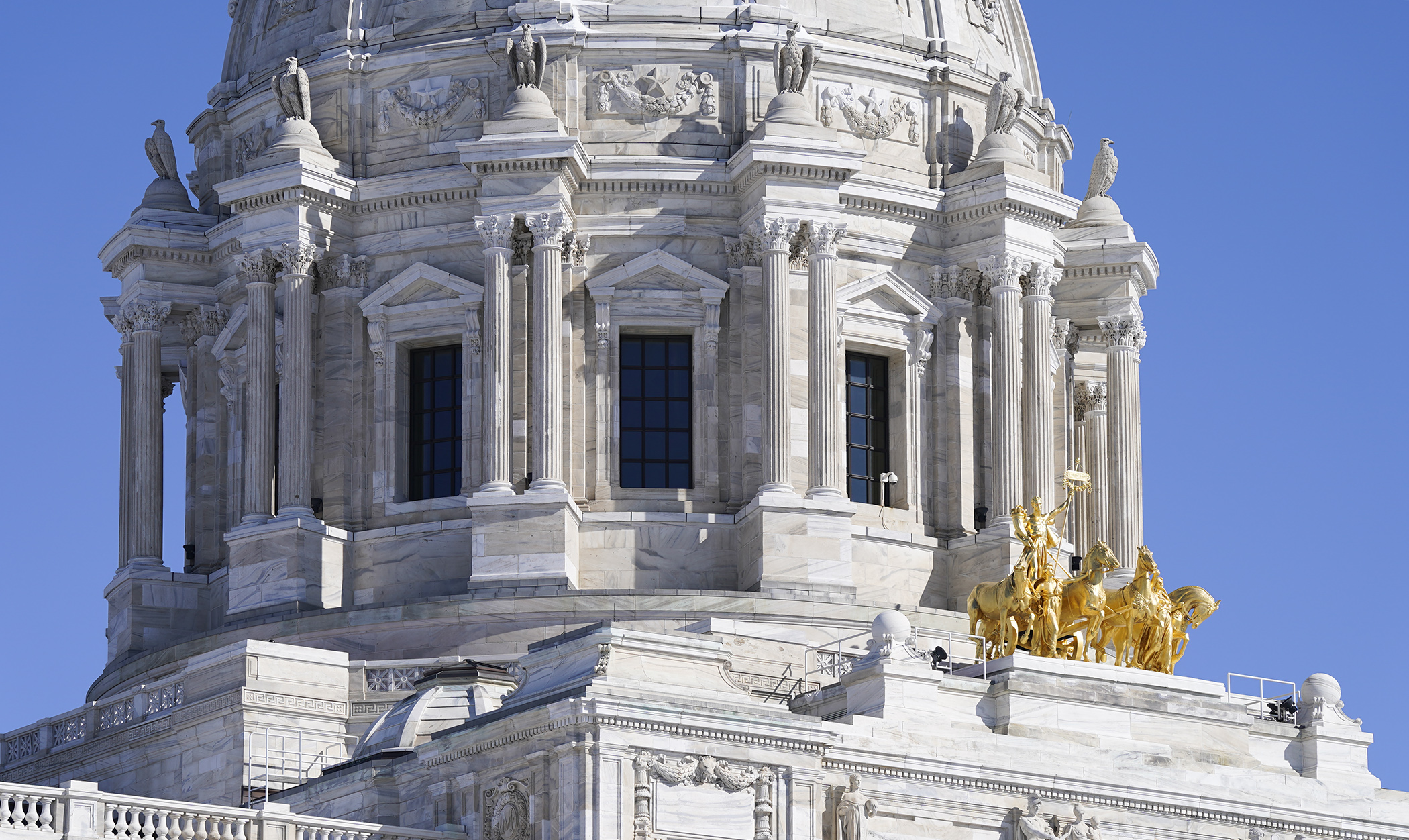Mental health, other care programs report reviewed; answers remain in flux

A 2021 law called for “an analysis of the current rate-setting methodology for all outpatient services in medical assistance and MinnesotaCare, including rates for behavioral health, substance use disorder treatment, and residential substance use disorder treatment.”
Its findings were the impetus for the House Human Services Policy Committee gathering Wednesday to receive the Minnesota Health Care Programs Fee-for-Service Community-Based Services Rate Study. No action was taken.
“Rates are a means to an end and the end is certainly to ensure members have access to services,” said Diogo Reis, director of the Health Improvement and Benefit Design Division at the Department of Human Services.
[MORE: View the PowerPoint presentation]
A primary issue for care providers is the lack of sustainable reimbursement funding.
Samantha Yerks, CEO of Introspect Mental Health, laid out the problem facing providers, writing: “We continue to experience a more severe mental health and [substance use disorder] care access crisis coming out of the global pandemic than ever before. … Costs of delivering care and sustaining staff salaries, benefits, facilities infrastructure, and meeting state regulations have increased exponentially. But, Medicaid (Medical Assistance) reimbursements — the core source of funding for our MN mental health and SUD treatment system — are not keeping pace.”
Medicare is a federal health insurance program for persons aged 65 and up and those with certain disabilities. Enrollees are responsible for sharing costs. Medicaid is a joint federal and state public health insurance program for low-income individuals with enrollees typically having minimal or no out-of-pocket costs for covered health care expenses. The federal government has general rules that all state Medicaid programs must follow, but each state runs its own program.
In 2023, the state’s Medicaid program paid about 74% of what the Medicare program would have paid, officials said. In 2013 it was 80%.
“We have to tweak our conversion factor to spend about the same we spent the year before,” Reis said. A 3% rate increase was signed into law last year.
“Currently, Medicaid rates for these services are below the cost of providing care,” wrote Dr. Eduardo Navarro Colon, chair of the Adult Psychiatry Clinic with the Hennepin Healthcare System.
Worst-case, the monetary issue is leading to program closures. But at least a decrease in program availability is occurring in many instances. That can result in longer waiting times people must wait for care.
Among the report’s recommendations are to:
- update the payment methodology for physical health services and eligible mental health services to mirror Medicare rates;
- adopt market-based rate factors and index them to inflation for mental health and early intensive developmental, and behavioral intervention services not covered under the resource-based relative value scale used to calculate the resources used in producing medical services;
- eliminate all legislatively mandated rate modifications that were implemented for budgetary reasons; and
- ensure transparency and collaboration with providers on the timing of rate updates and rate rebase activities.
“The state budget bill was last year, so we’re looking into ways to make sure that we are able to address this issue,” said Rep. Mohamud Noor (DFL-Mpls), who chairs the House Human Services Finance Committee. “… We will do our best. But, at this point, I don’t want to disappoint anybody. We don’t have any budget capacity to do the rate increases that were reflected in this but we’ll keep on working together.”
Rep. Dave Baker (R-Willmar) suggested utilizing the $1.5 billion set aside for paid family sick leave, delaying it, and putting the funding toward these programs.
“We still have a lot of money that we could reallocate if we want to really take a leadership role in this,” he said. “… I don’t think we can wait until 2025.”
Related Articles
Search Session Daily
Advanced Search OptionsPriority Dailies
Speaker Emerita Melissa Hortman, husband killed in attack
By HPIS Staff House Speaker Emerita Melissa Hortman (DFL-Brooklyn Park) and her husband, Mark, were fatally shot in their home early Saturday morning.
Gov. Tim Walz announced the news dur...
House Speaker Emerita Melissa Hortman (DFL-Brooklyn Park) and her husband, Mark, were fatally shot in their home early Saturday morning.
Gov. Tim Walz announced the news dur...
Lawmakers deliver budget bills to governor's desk in one-day special session
By Mike Cook About that talk of needing all 21 hours left in a legislative day to complete a special session?
House members were more than up to the challenge Monday. Beginning at 10 a.m...
About that talk of needing all 21 hours left in a legislative day to complete a special session?
House members were more than up to the challenge Monday. Beginning at 10 a.m...